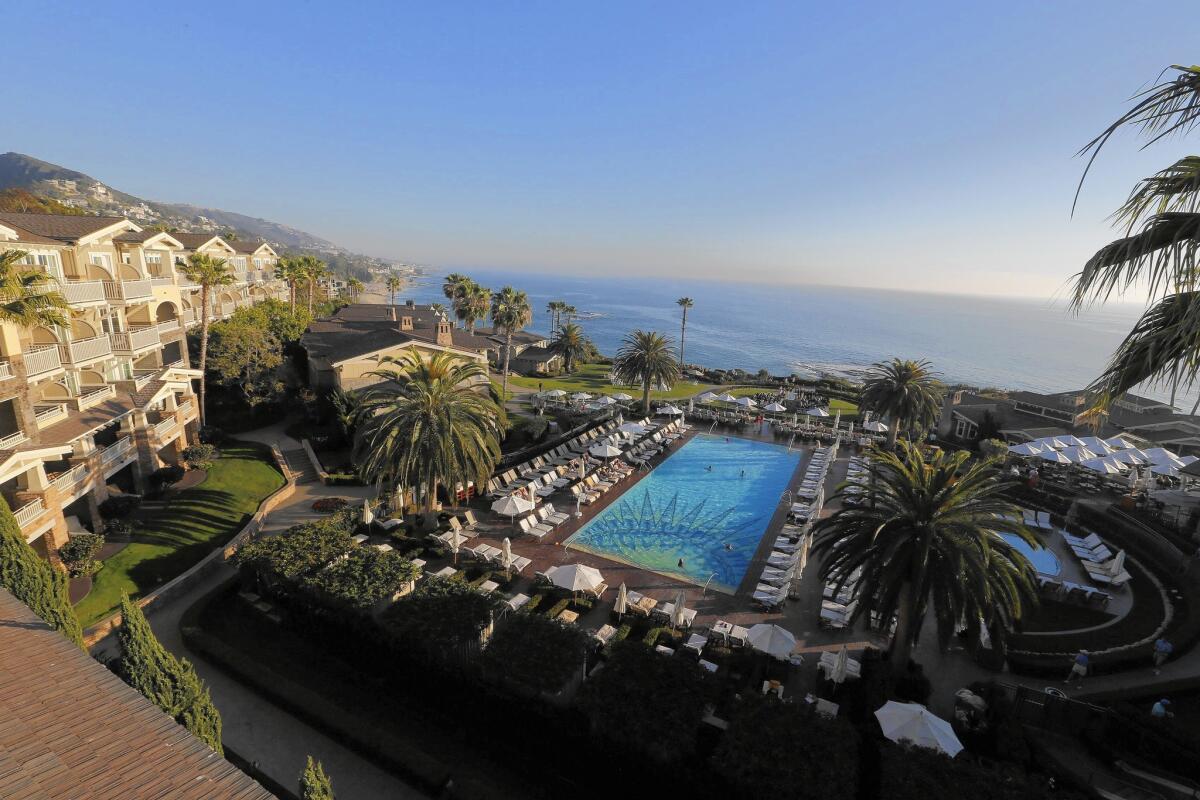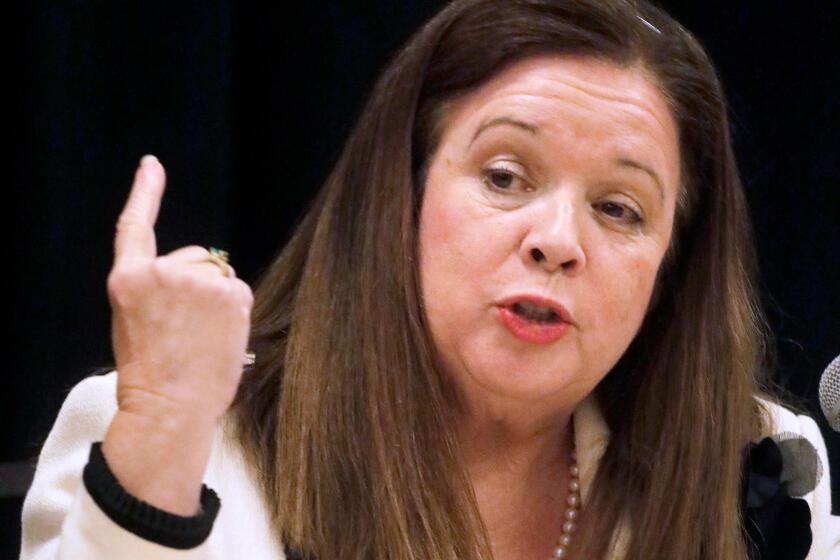Investors snap up luxury hotels amid rising occupancy and room rates

- Share via
Pampered guests at the five-star Montage Laguna Beach resort can swim in a lap pool overlooking the Pacific, dine on caviar and sleep on goose-down pillows to a lullaby of crashing waves.
The rooms typically go for $800 a night and up, but the hotel has no problem filling them, a stark contrast from just a few years ago, when the Great Recession kept most people away.
Eager investors are taking notice. Late last month, the Laguna Beach landmark sold for $360 million, a record of more than $1.4 million per room, underscoring the rush to buy hotels, especially in the thriving luxury market serving wealthy business and leisure travelers.
Fueled by rising occupancy and room rates, investors bought 399 California hotels for a total of $5.1 billion in 2014, a nearly threefold increase from 2009, when 92 hotels sold for a combined value of nearly $1.8 billion, according to research by Atlas Hospitality, an Irvine hotel industry consulting firm.
“As much as we had a perfect storm in 2009, we are at the opposite end of the spectrum now,” said Alan Reay, president of Atlas. “It’s a very strong sellers market.” Only hotels in Hawaii and New York have traded for more per room, he said.
Hotels, especially deluxe inns like the Montage, were among the first businesses to be brutalized by the epic economic downturn. Leisure travelers stayed home and business people grew loath to be seen cavorting in expensive resorts when so many others were in financial turmoil.
Business was so bad by 2009 that there was even a name for the backlash against lavish travel and entertainment spending by corporations: “the AIG effect.”
Insurance company American International Group Inc. took a public drubbing after spending $443,000 to treat top employees at the St. Regis Monarch Beach resort in Dana Point just days after accepting an $85-billion federal bailout. Other companies quickly canceled group outings to save money and to avoid looking out of touch during a time of widespread hardship.
Now, the AIG effect appears to have all but disappeared as room rates surpass $1,000 a night at elite California hotels and the properties are sought by investors willing to pay top dollar to acquire them.
The $1.44 million per room that the sellers of the Montage received “shattered the price barrier for California hotels by a wide margin,” Reay said. The hotel, which was owned by a Redwood City investment firm funded by EBay founder Pierre Omidyar, was sold to Chicago real estate investment trust Strategic Hotels & Resorts. It has a five-star rating from Forbes Travel Guide.
Among the biggest sales last year were the St. Regis Monarch Beach for $317 million to a Denver private equity firm, the Los Angeles Airport Marriott for $160 million to Chinese investors, and the Miramonte Resort & Spa in Indian Wells for $26 million to a Boston private equity firm.
Real estate investment trusts that trade on Wall Street and private equity firms that pool money from multiple investors are borrowing money at historically low rates to do deals, said John Strauss, managing director of hotels for real estate brokerage JLL.
Overseas investors are also competing for prominent properties in urban centers and resorts in the West, he said.
“There is a growing appetite among Asian investors in general and Chinese investors in particular,” Strauss said, adding that they’re hunting for property in familiar places such as San Francisco and Los Angeles.
Investors are drawn to a supply-and-demand imbalance, he said. Few hotels have been built since the recession, especially in dense city centers and resort-worthy coastal sites where financial and regulatory barriers are high for developers.
“The supply is stable, and the demand keeps growing,” Strauss said. All three categories of hotel guests — leisure travelers, individual business travelers and business-related group meetings — are expanding.
But such favorable conditions for hotel operators are bad news for people looking to score bargain rates on upscale hotel rooms. The deep discounts hoteliers offered to keep rooms occupied during the lean years have dried up.
The average daily rate for a U.S. hotel room last year was $115, a 4.6% increase from 2013, hospitality research firm STR Inc. said. Hot markets including San Francisco had double-digit rate increases. Average occupancy climbed from 59% to 70% over the same period.
More rate growth is on the way as long as the economy remains on track and new hotels are still fairly rare, industry observers said.
Hotels that endured the downturn are now thriving. Terranea, a seaside resort in Rancho Palos Verdes, was completed in 2009, at the depth of the hotel industry crash.
“A lot has changed in the last five years,” said Matt Walker, an executive vice president at Lowe Enterprises, the developer of the resort. “Terranea is really hitting its stride now.”
The 582-room inn opened with 380 workers because business was so light at the time. Terranea now has more than 1,200 employees plus 300 contract workers, Walker said. Group meeting business, which accounts for about half of all hotel guests, has climbed, and 517 couples have paid to hold their weddings on the grounds since the hotel opened.
Lowe, which manages 45 hotels, is eager to buy or build more, Walker said.
“We are actively looking for hotel investments all over the country, particularly in Southern California,” he said.
One of Lowe’s projects in the pipeline is Ivy Station, a mixed-use project at a Metro Expo Line train stop in Culver City that will combine a 150-room hotel with offices and apartments.
The surging hotel market has yet to set off alarms, but some are wary of a future bubble.
“When things are this good, you wonder where the cracks are going to come,” Reay said. “We are six years into the economic rebound, and at some point the music is going to stop.”
Hotel booms are usually ended by economic downturns or over-development of new hotels that flood the market with competition.
“We’re at least two or three years out from overbuilding,” Reay said.
Twitter: @rogervincent
Times staff writer Hugo Martin contributed to this report.
More to Read
Sign up for Essential California
The most important California stories and recommendations in your inbox every morning.
You may occasionally receive promotional content from the Los Angeles Times.







